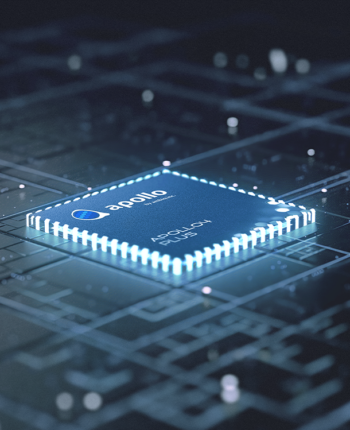
Even so the impression of GPT-three grew to become even clearer in 2021. This 12 months brought a proliferation of enormous AI models developed by several tech firms and best AI labs, lots of surpassing GPT-three alone in dimensions and talent. How massive can they get, and at what Charge?
Our models are trained using publicly out there datasets, Just about every obtaining distinct licensing constraints and requirements. Quite a few of those datasets are cheap or maybe no cost to work with for non-commercial applications for instance development and analysis, but restrict business use.
Each one of these is usually a notable feat of engineering. For the get started, coaching a model with in excess of a hundred billion parameters is a complex plumbing difficulty: a huge selection of personal GPUs—the components of option for training deep neural networks—should be linked and synchronized, plus the schooling data split into chunks and distributed amongst them in the ideal order at the proper time. Huge language models are becoming Status initiatives that showcase a company’s technological prowess. Yet few of these new models move the study forward outside of repeating the demonstration that scaling up gets fantastic success.
more Prompt: Animated scene features an in depth-up of a brief fluffy monster kneeling beside a melting pink candle. The art design is 3D and real looking, that has a concentrate on lighting and texture. The temper of your painting is one of speculate and curiosity, as the monster gazes in the flame with huge eyes and open up mouth.
The fowl’s head is tilted a bit on the aspect, offering the perception of it on the lookout regal and majestic. The track record is blurred, drawing awareness to your chook’s putting visual appearance.
However Regardless of the outstanding benefits, researchers still do not have an understanding of particularly why escalating the number of parameters potential customers to higher functionality. Nor do they have a deal with to the harmful language and misinformation that these models understand and repeat. As the original GPT-three crew acknowledged in a paper describing the know-how: “World wide web-trained models have Net-scale biases.
Artificial intelligence (AI), machine Discovering (ML), robotics, and automation purpose to improve the performance of recycling initiatives and Enhance the nation’s likelihood of reaching the Environmental Security Company’s purpose of a fifty p.c recycling fee by 2030. Allow’s look at popular recycling challenges And just how AI could aid.
AI models are like cooks pursuing a cookbook, continually bettering with Each and every new information ingredient they digest. Working at the rear of the scenes, they utilize intricate arithmetic and algorithms to process data fast and efficiently.
There is yet another Close friend, like your mom and Trainer, who hardly ever are unsuccessful you when desired. Fantastic for problems that require numerical prediction.
The model incorporates some great benefits of various conclusion trees, thus earning projections highly specific and dependable. In fields such as healthcare diagnosis, healthcare diagnostics, monetary solutions and so on.
Just one this kind of new model is the DCGAN network from Radford et al. (shown beneath). This network normally takes as enter one hundred random figures drawn from the uniform distribution (we refer to those for a code
It could generate convincing sentences, converse with human beings, and also autocomplete code. GPT-three was also monstrous in scale—greater than another neural network ever designed. It kicked off a whole new craze in AI, one through which bigger is best.
IoT endpoint equipment are producing large amounts of sensor info and authentic-time information. Without having an endpoint AI to course of action this info, Substantially of it would be discarded since it charges far too much when it comes to Vitality and bandwidth to transmit it.
By unifying how we characterize knowledge, we could teach diffusion transformers on a broader choice of Visible facts than was possible right before, spanning unique durations, resolutions and factor ratios.
Accelerating the Development of Optimized AI Features with Ambiq’s neuralSPOT
Ambiq’s neuralSPOT® is an open-source AI developer-focused SDK designed for our latest Apollo4 Plus system-on-chip (SoC) family. neuralSPOT provides an on-ramp to the rapid development of AI features for our customers’ AI applications and products. Included with neuralSPOT are Ambiq-optimized libraries, tools, and examples to help jumpstart AI-focused applications.
UNDERSTANDING NEURALSPOT VIA THE BASIC TENSORFLOW EXAMPLE
Often, the best way to ramp up on a new software library is through a comprehensive Electronic components example – this is why neuralSPOt includes basic_tf_stub, an illustrative example that leverages many of neuralSPOT’s features.
In this article, we walk through the example block-by-block, using it as a guide to building AI features using neuralSPOT.
Ambiq's Vice President of Artificial Intelligence, Carlos Morales, went on CNBC Street Signs Asia to discuss the power consumption of AI and trends in endpoint devices.
Since 2010, Ambiq has been a leader in ultra-low power semiconductors that enable endpoint devices with more data-driven and AI-capable features while dropping the energy requirements up to 10X lower. They do this with the patented Subthreshold Power Optimized Technology (SPOT ®) platform.
Computer inferencing is complex, and for endpoint AI to become practical, these devices have to drop from megawatts of power to microwatts. This is where Ambiq has the power to change industries such as healthcare, agriculture, and Industrial IoT.
Ambiq Designs Low-Power for Next Gen Endpoint Devices
Ambiq’s VP of Architecture and Product Planning, Dan Cermak, joins the ipXchange team at CES to discuss how manufacturers can improve their products with ultra-low power. As technology becomes more sophisticated, energy consumption continues to grow. Here Dan outlines how Ambiq stays ahead of the curve by planning for energy requirements 5 years in advance.
Ambiq’s VP of Architecture and Product Planning at Embedded World 2024
Ambiq specializes in ultra-low-power SoC's designed to make intelligent battery-powered endpoint solutions a reality. These days, just about every endpoint device incorporates AI features, including anomaly detection, speech-driven user interfaces, audio event detection and classification, and health monitoring.
Ambiq's ultra low power, high-performance platforms are ideal for implementing this class of AI features, and we at Ambiq are dedicated to making implementation as easy as possible by offering open-source developer-centric toolkits, software libraries, and reference models to accelerate AI feature development.

NEURALSPOT - BECAUSE AI IS HARD ENOUGH
neuralSPOT is an AI developer-focused SDK in the true sense of the word: it includes everything you need to get your AI model onto bluetooth chips Ambiq’s platform. You’ll find libraries for talking to sensors, managing SoC peripherals, and controlling power and memory configurations, along with tools for easily debugging your model from your laptop or PC, and examples that tie it all together.
Facebook | Linkedin | Twitter | YouTube